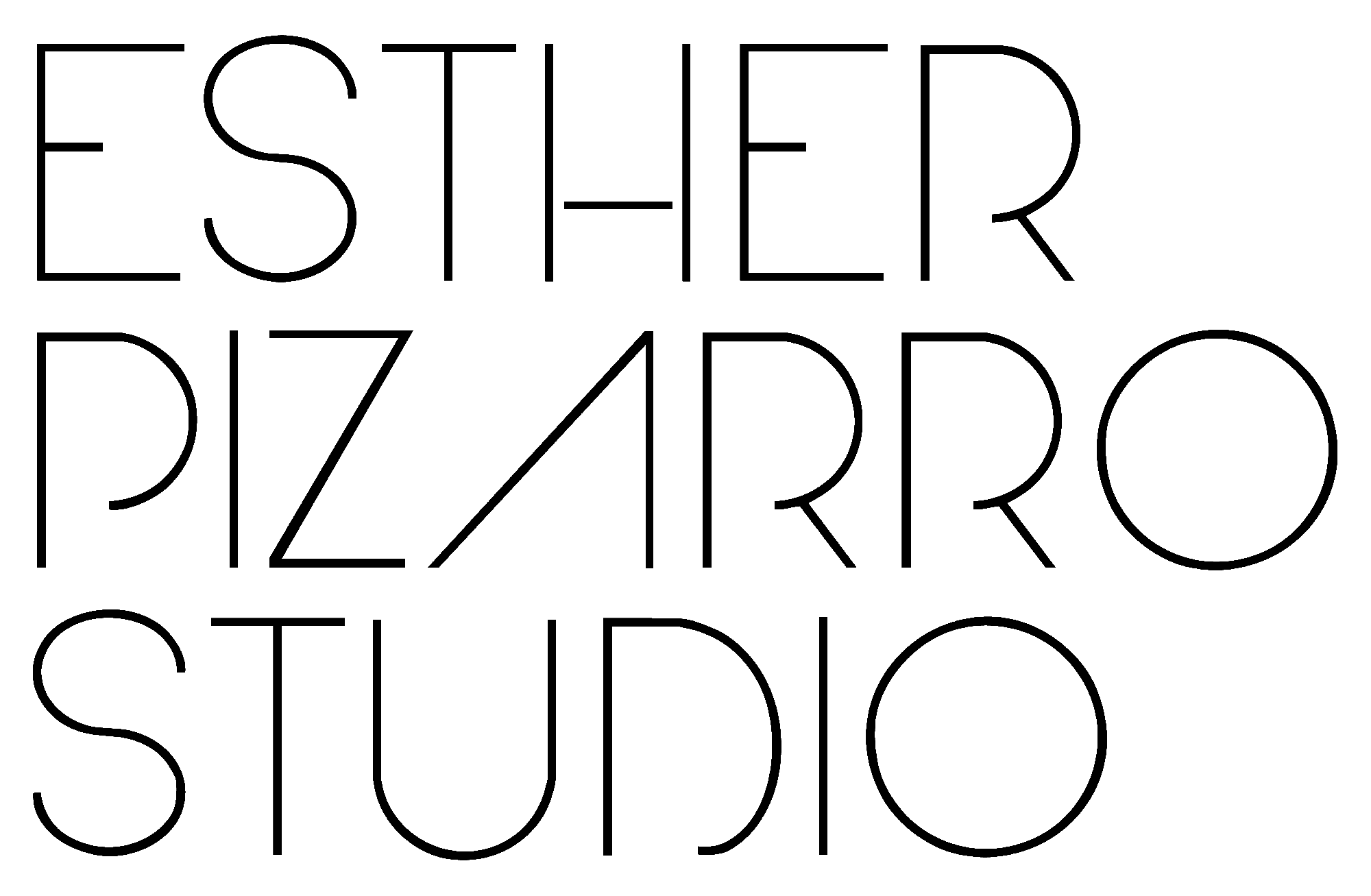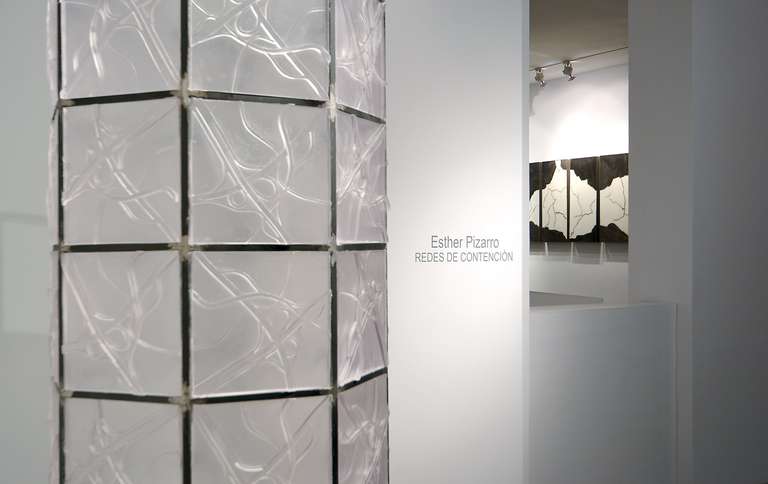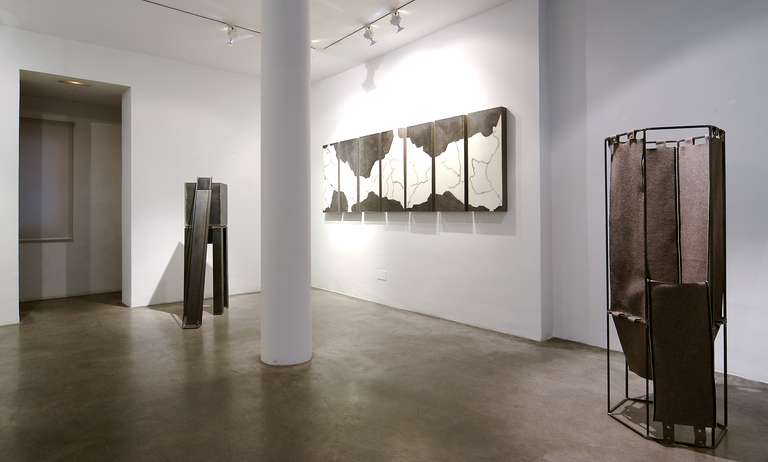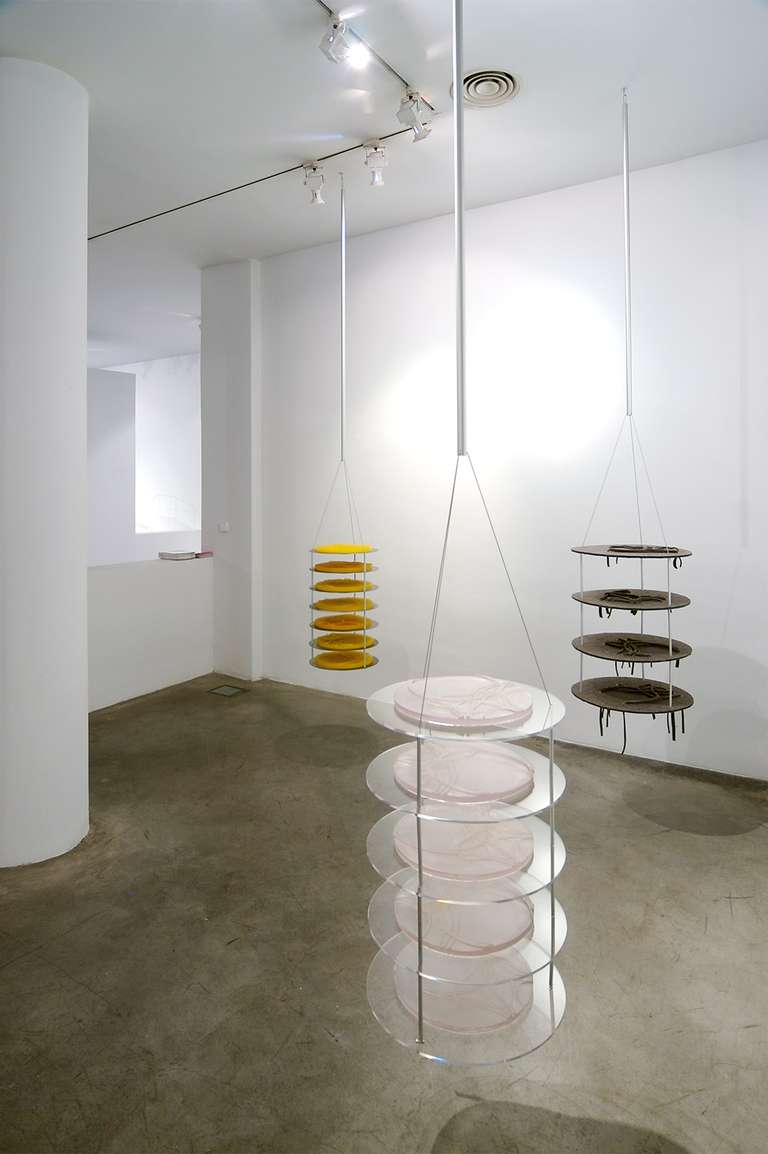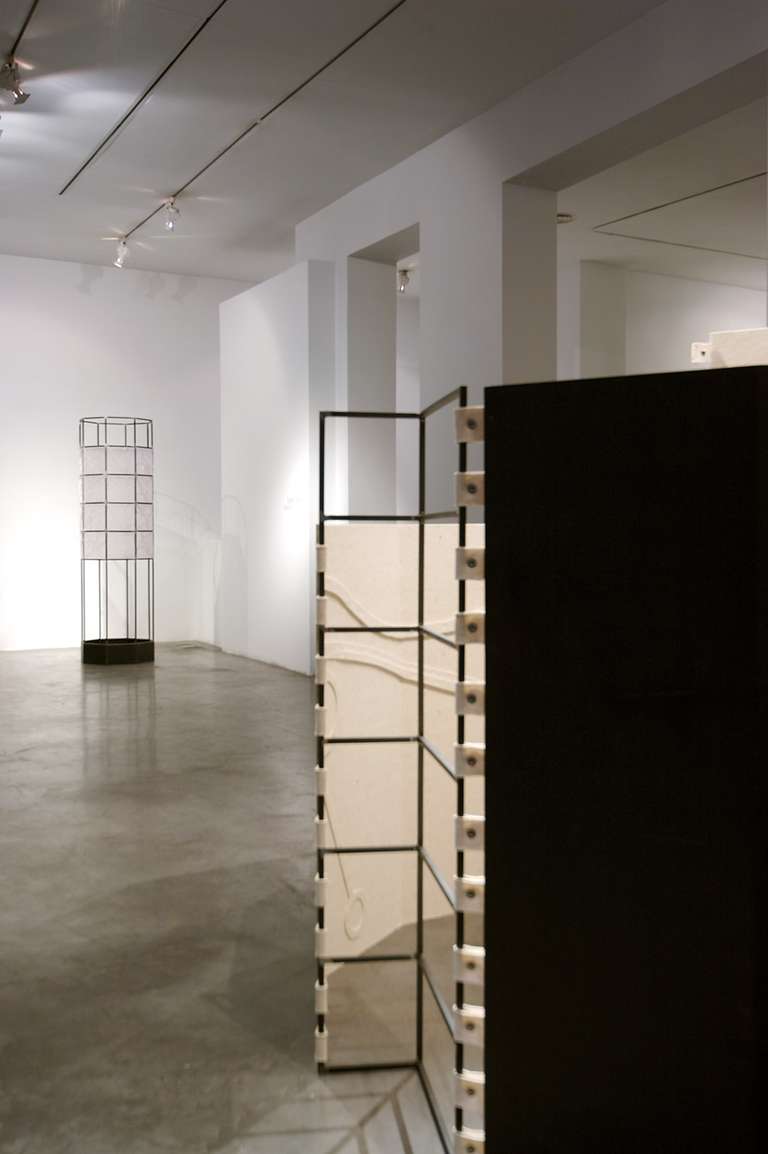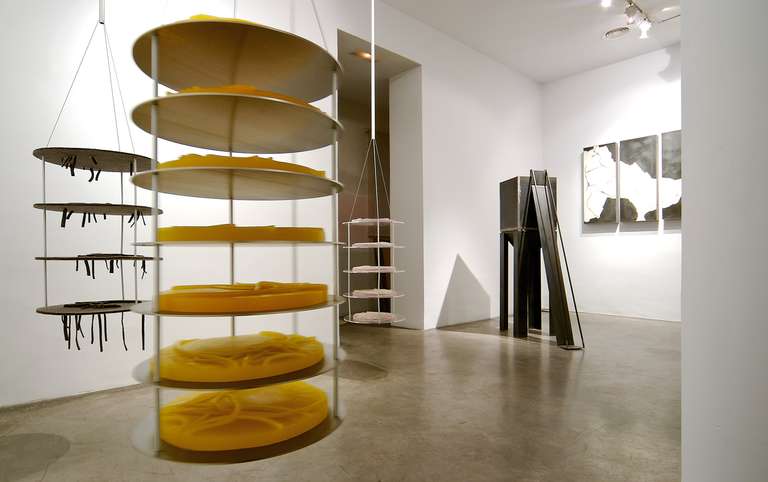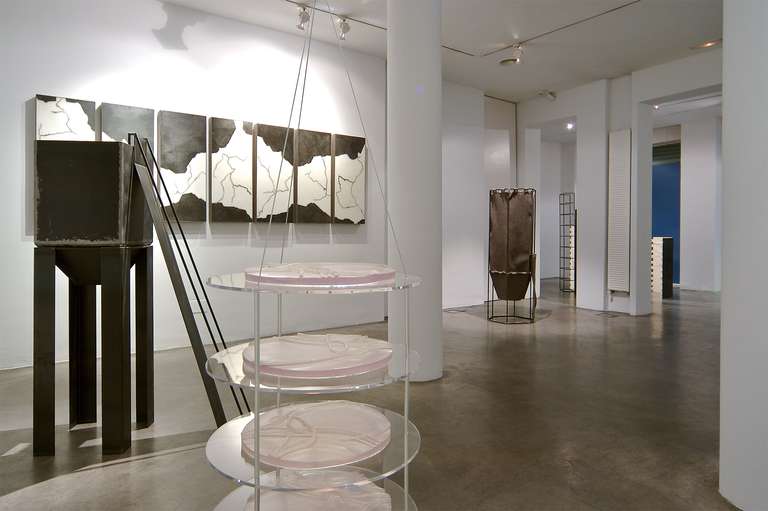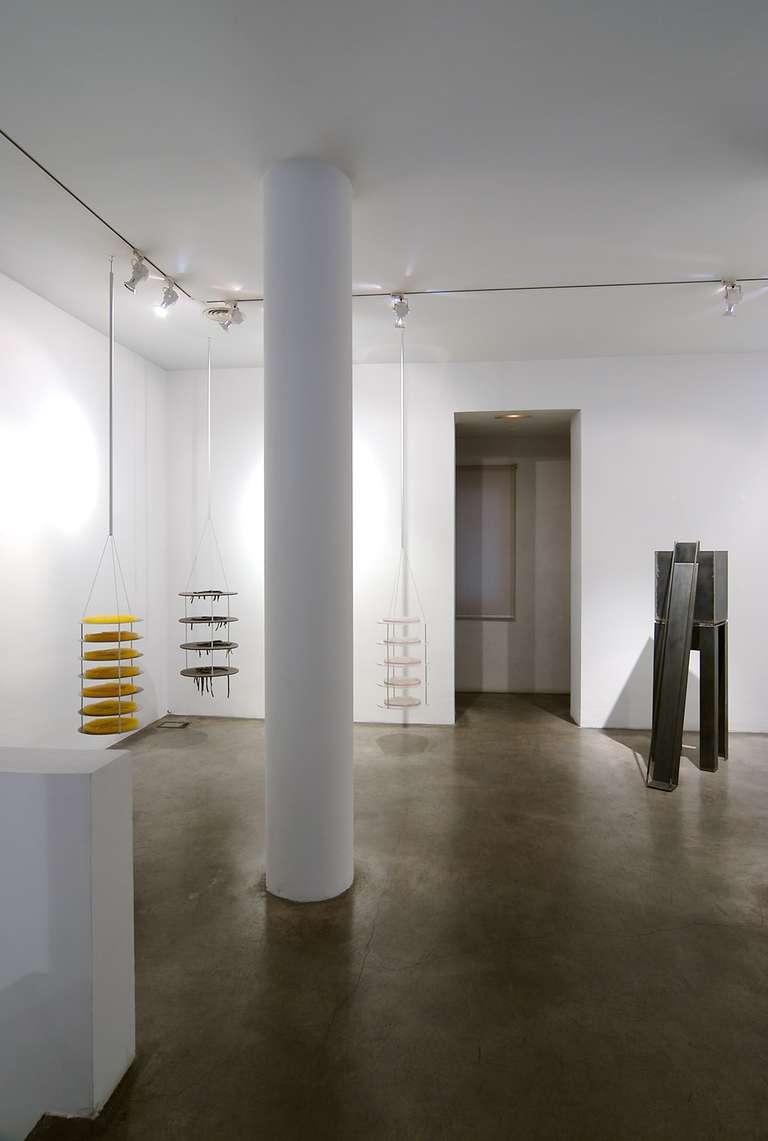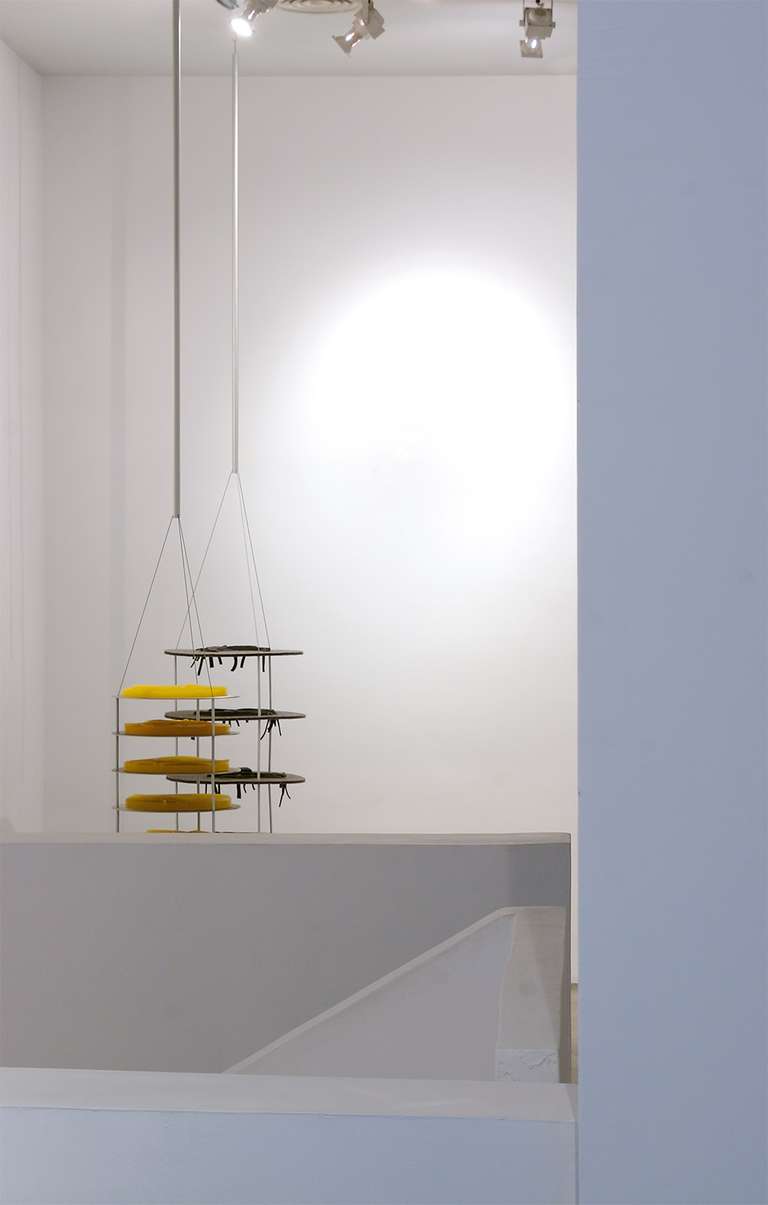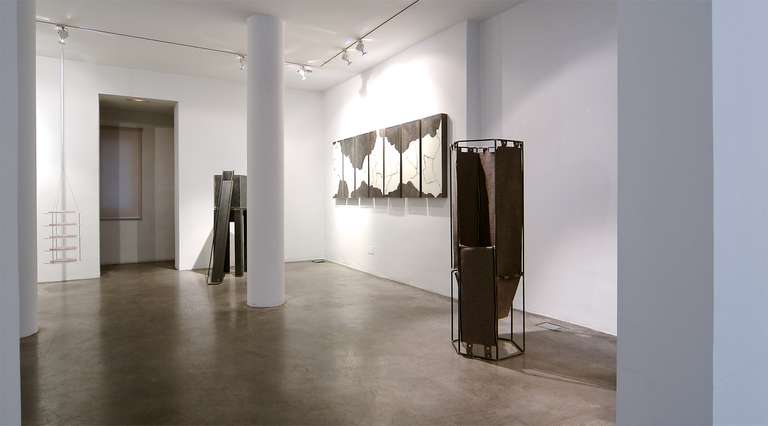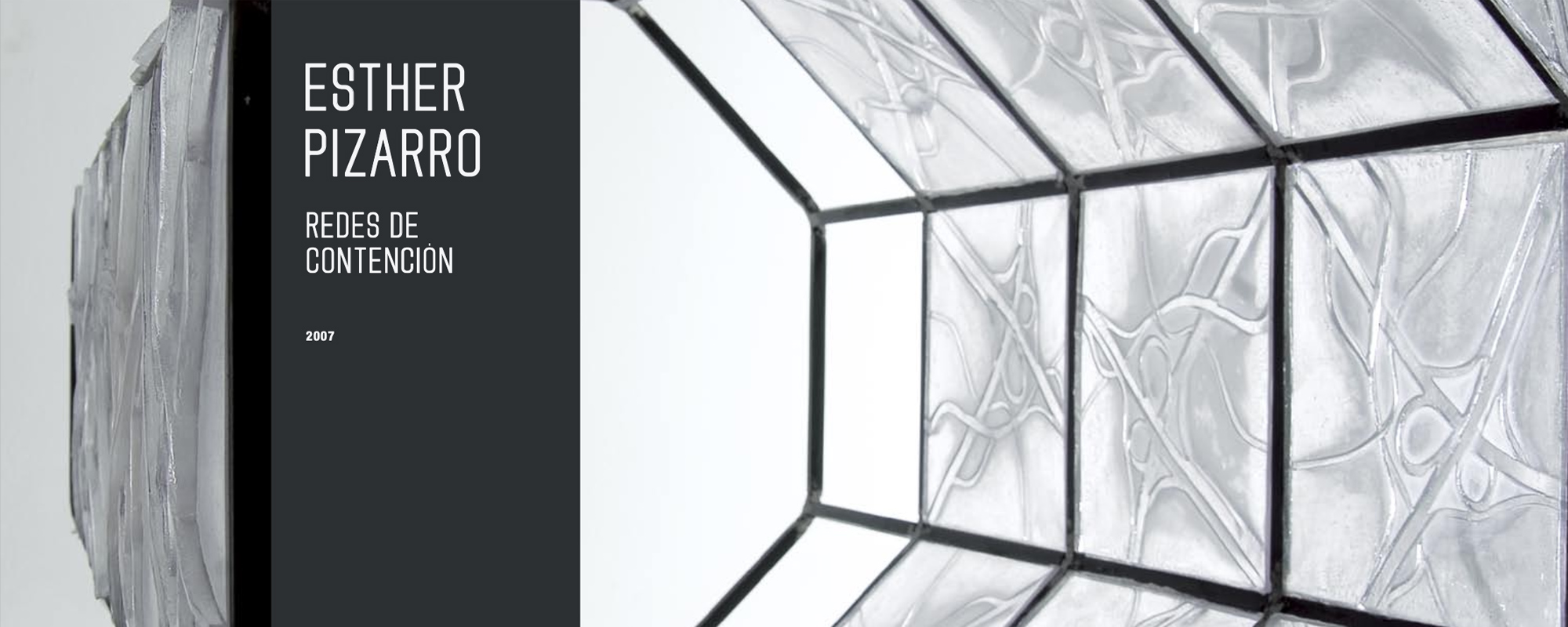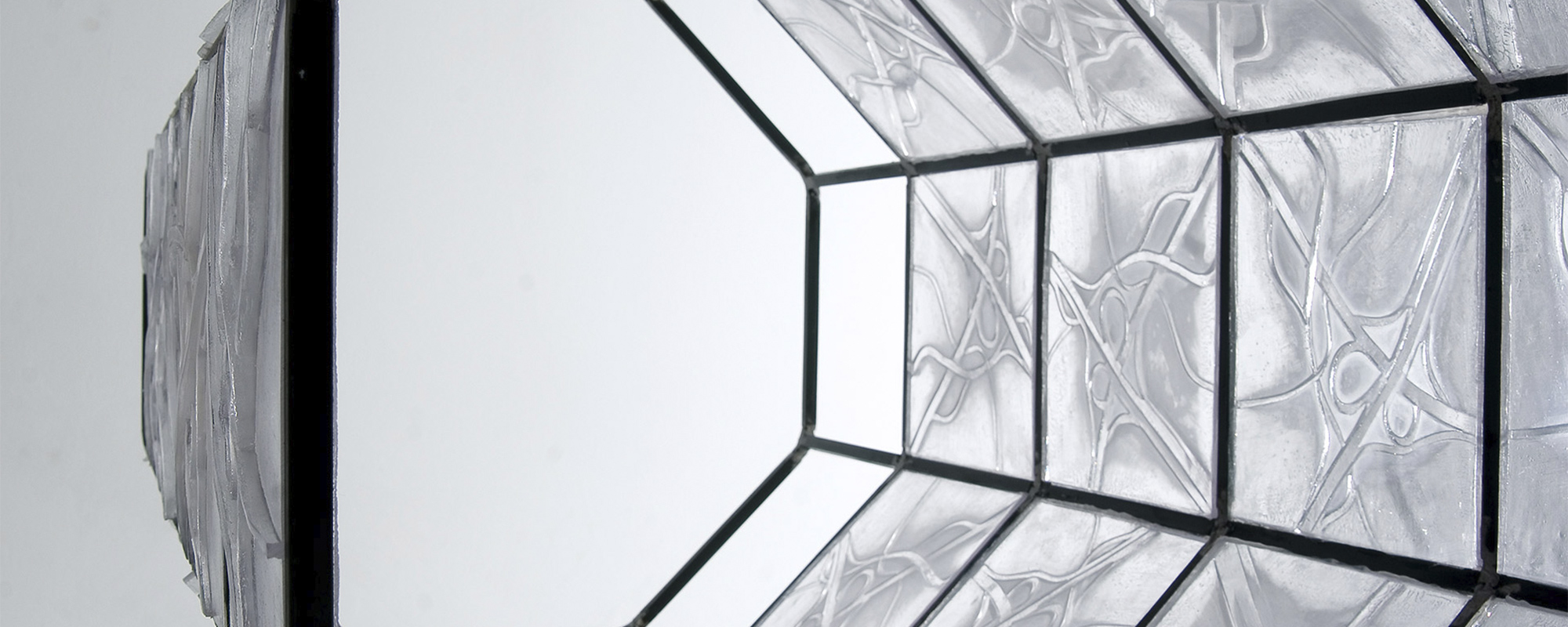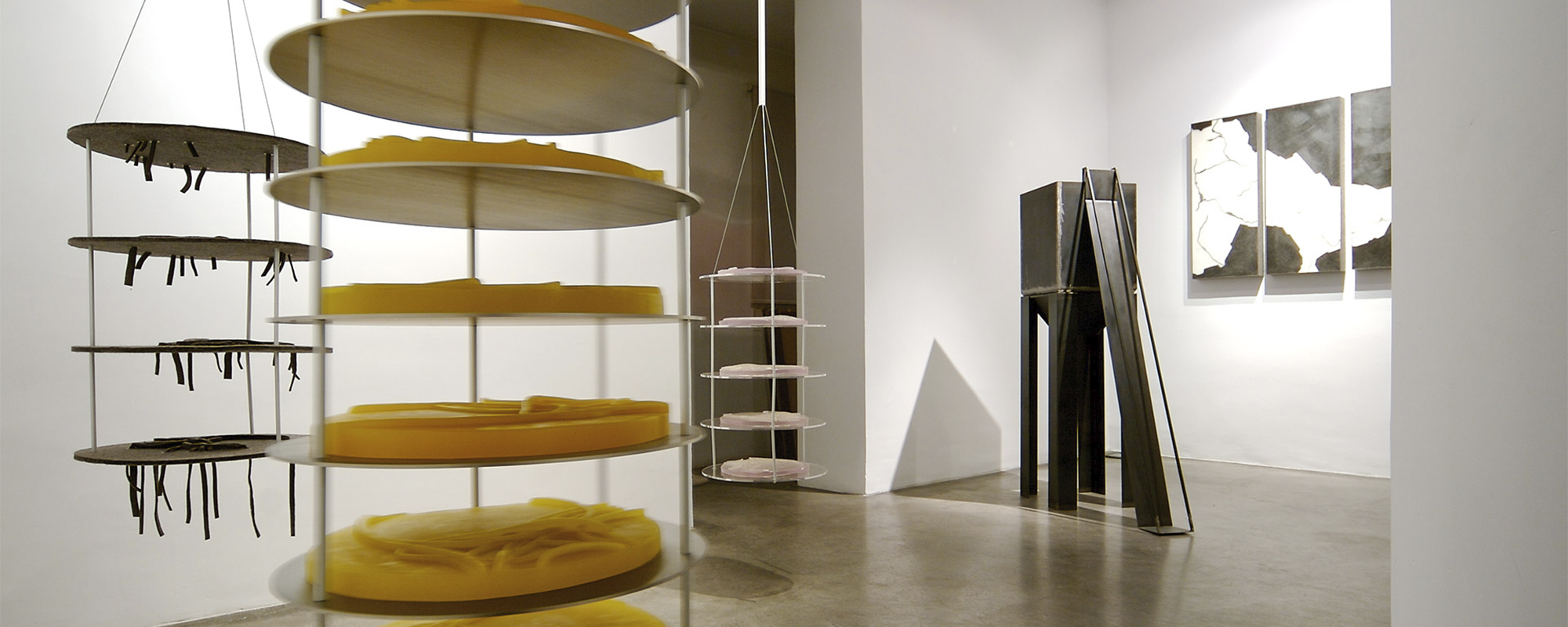
CONTENTION NETWORKS © 2007 :: Raquel Ponce Gallery
“Contention Networks”
Raquel Ponce Gallery, Madrid, Spain
29/10/2007 to 15/12/2007
The globalised world is the world of movement, its cities intertwined by networks and fast-paced communication flows. They are polycentric and ductile places, amalgamation and dislocation and tend, as Esther Pizarro suggests, to be perceived as a negative space rather than as a proposal of precise contents. Negative space that is an expression of uncertainty. Life and negative space.
Consubstantial to sculptural language, the void has not only always been present but has played a central role throughout many phases of Esther Pizarro's career, understood as a place where experiences are linked. What happens, happens in the void....
Esther Pizarro has momentarily moved away from following the urban progression of cities and now stops at their margins, at what has not yet been conquered by the furore of construction. It is a periphery that is by no means a passive place; on the contrary, it is where the great communication routes that surround the cities converge, ring roads that criss-cross each other to form complex junctions. In the unstable balance of cities, these vibrant tangles of motorways are, in their resounding and imposing presence, unquestionable certainties. And it is here that the artist finds the motifs that underpin this latest series. They are architectural elements that have fallen into disuse, such as reservoirs or large extraction pipes. There is an interest in rescuing structures that, once converted into sculptures, once again agglutinate the very context in which they are inscribed, as if the setting and its raison d'être were the foundation of the work itself. Because the allusions to these nodes of communication in which they are located are present in one way or another in all the pieces in the series. The topographies of these sites are not new. As early as 1997, Esther Pizarro made metal boxes with a clear minimalist air, inside which similar images could be seen. The reference to these places is now inscribed on the exterior of some of these towers. And although these new vertical structures may seem to be the result of a drastic change on the part of the artist, they condense all the elements that have been the backbone of her work up to now. They are simply the result of a plastic reworking absolutely full of logic and sense in which everything seems to fit together without stridency or artifice.
One of the new pieces, halfway between sculpture and architecture, Redes Cristalinas, has a clear structural vocation. Based on a regular octahedron, it alternates hollows with planes that house inscribed topographies. The human scale invites the viewer to surround the piece, but the artist wants the viewer to enter it, to look inside and discover the play of opposites (inside and outside, flat and empty, gravity and lightness), the qualities of the material and the topography inscribed in it. Esther Pizarro today proposes these topographies using different strategies and materials. Although she seeks absolute control over the material, in the pieces made with waxes and resins, transparent polyesters and felts, she admits imprecision because the motifs she represents are imprecise.
The growth of cities is excessive, it violently exceeds its limits and leaves behind a trail of sedimentation of which the artist is fully aware. In Redes Cristalinas, the transparent polyester exceeds and spills beyond the frame that houses it.
Esther Pizarro shares the notion that space comes to an end and opts for a vertical modulation, for a reference to the new urbanism that grows upwards and not that which spreads out in a disorderly fashion.
The towers show a regular growth based on simple and sober geometries and the rhythm with which they rise is gentle and harmonious. We spoke of the "relative absence" of human forms, but the anthropomorphic character of a work like Contención Férrea cannot go unnoticed. A (thoracic?) box stands on four iron pillars. This box is accessed by a diagonal ramp that breaks up the prismatic form. Inside the box, once again, the dynamic succession of geometric planes catches the eye. In the felt pieces we return to the contrast, mainly between cold and warm rhythms, between the rigidity and rotundity of the iron structures and the malleability of the material. Approaching its interior implies an absorption into the very soul of the sculpture. In many of these pieces we see the anthropomorphic character not only because of the scale of the sculptures but also because we understand their interior as a living organism. There is an outer skin and a persistent crossing of energies in the interiors.
Also made of felt is another of the central pieces in this latest series of works, a more expansive work, with less vertical ambition, more in line with previous works that accentuated the sensation of space, where feeling inside and outside was a real physical experience. It is a kind of cell whose exterior is made of steel and its interior of felt. It is a versatile cell that offers different installation options as it can be opened and closed more or less. It is here that we best understand the sculpture as a living organism, with a warm interior in the line of many of the previous sculptures, those of small and large format, and in whose exterior, the hard coldness of the material could be guessed and felt. On the inner faces of this open polyhedron we can see the knots of communication made of felt, and we can also see that the enclosures that join it to the iron structure are those used in the straitjackets. Highly metaphorical, therefore, Celda Dual seems to want to demand a halt to the urbanistic furore not only in the closed and hermetic quality of the piece, but also in the desire to stop more than one person's feet by means of an element with clear and very direct connotations.
Javier Hontoria
(Extract from catalogue text)
CREDITS ::
Conceptualisation: Esther Pizarro
Production: Esther Pizarro
Photography: Markus Schroll
ASSOCIATED CATALOGUE ::
Pizarro, Esther (2007). Catálogo exposición: Redes de Contención. Texto: Javier Hontoria. Edita: Galería Raquel Ponce, Madrid. Edición digital.
